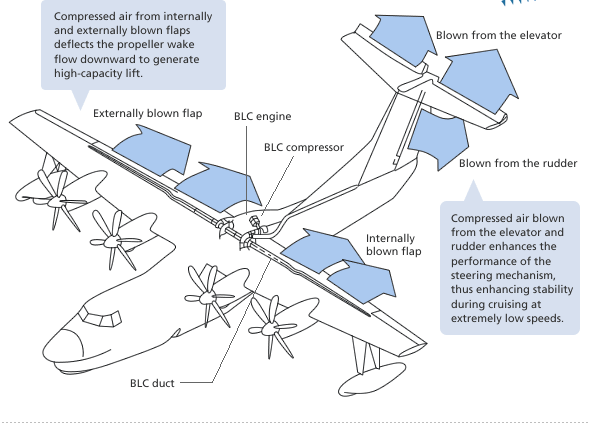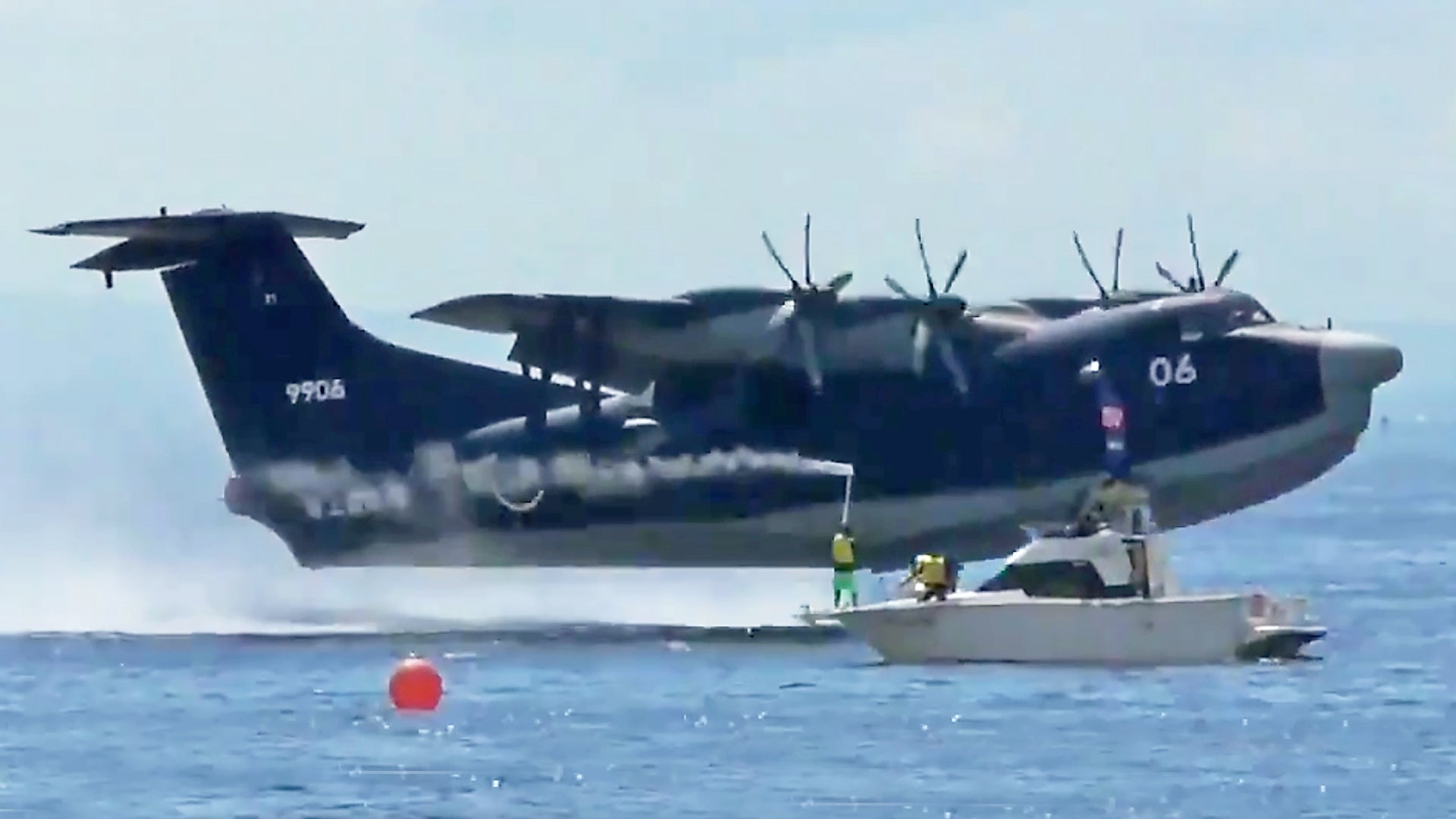The ShinMaywa US-2, which is a direct outgrowth of the half-century-old US-1 design it replaced, provides search and rescue, maritime patrol, firefighting, medical evacuation, and logistical support capabilities for the Japan Maritime Self Defense Force. It was the largest amphibious flying boat in production up until China bested it with their AG600 amphibian that first flew in 2017. But that aircraft isn’t yet operationally deployed, the US-2 is, and it recently displayed its somewhat astonishing short-takeoff and landing (STOL) capabilities to onlookers at the Red Bull Air Races in Chiba. Check out the clips below.
Although the US-2 may look like the flying boats of yesteryear, it is a remarkably modern aircraft. It features a glass cockpit, a digital flight control system, and four Rolls-Royce AE 2100J turboprop engines that pump out 4,600hp each. In its firefighting configuration, she can deploy an impressive 15 tons of water. Performance-wise, the US-2 is no slouch. It cruises along at 300mph at 20,000 feet and has a range just shy of 3,000 miles. It can also land in some really rough seas, with waves up to around nine feet tall.
Yet what’s most impressive, as the videos above showcase, is the US-2’s short-takeoff and landing (STOL) capabilities that are made possible primarily by a blown flap and flight control system arrangement. This not only allows for very short and slow takeoffs and landings, but it also gives US-2 pilots a unique level of controllability even at very slow speeds.
Basically, the US-2 makes its own lift and control surface pressure. Check out this diagram to understand exactly how the system works:

The aircraft’s big wings, large flaps, draggy boat hull, and its quartet of six-blade props that can be thrown into reverse also help greatly with its ability to plop down in a very small stretch of water.
For a country of islands, the US-2 makes a ton of sense, but the only drawback to it is that it costs a lot of money. The price of the sixth one ordered in 2013 was $156M. Only half a dozen of them exist even though the first one took to the air in 2003. Two more are currently under construction and, clearly, their high cost is at least somewhat a result of there being such low production numbers. Still, India, Thailand, Indonesia, and Greece have all expressed interest in the type. The deal with India for a dozen of the planes, which has been an on-again, off-again affair, has each aircraft costing about $113M. For comparison, the largest of the 737 Max aircraft has a list price just shy of that number—that is before its big controversy began.




The US-2 has only grown more relevant since entering service in 2007. Many countries are facing challenges in littoral regions that they weren’t just a decade ago. The rise of China, in particular, and Beijing’s extraterritorial claims, has put a new premium on the capabilities that a big amphibian can provide. Hence the reason China itself developed the AG600 at substantial cost. Beyond that, the fact that these planes can also be formidable firefighters when needed is a huge advantage that countries outside of the Indo-Pacific region may find very attractive.
If the US-2’s unit price can drop significantly via additional orders and a more mature aircraft production line overall, it would make it all that much more attractive to potential buyers that would be otherwise deterred by its current price tag.
Regardless, the mighty US-2 is one impressive machine to watch in action. The fact that it can land on a runway just as easily as it can on the water, and do so in a very short distance, makes it a heck of a versatile beast—one that is also reminiscent of days gone by when flying boats graced the skies on a regular basis around the globe.
Contact the author: Tyler@thedrive.com
